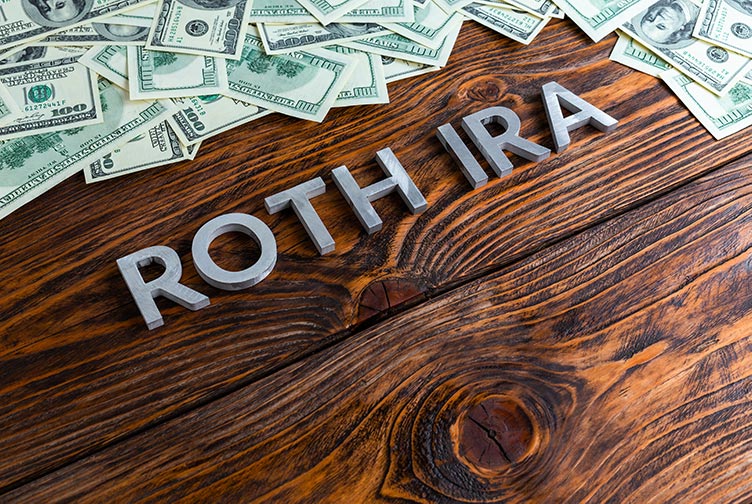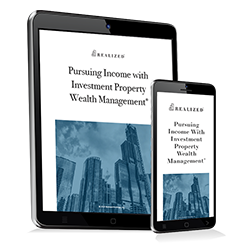
Qualified retirement plans are recognized by the IRS and meet requirements laid out in Section 401(a) of the U.S. tax code and ERISA guidelines. Most plans offered through your employer are qualified retirement plans and qualify for tax breaks.
A Roth IRA is not a qualified retirement plan, but there are similar tax advantages for those planning for retirement.
Roth IRAs
Retirement savers fund their Roth IRA account with after-tax dollars, which offer some attractive benefits:
- Your Roth IRA contributions grow tax-free.
- When you withdraw post-retirement, you won’t owe any taxes. The amount in your Roth IRA account is yours to keep.
- You can continue making contributions to your Roth IRA account past the age of retirement as long as your income still falls within certain limits.
- Retirement savers are not required to take distributions at a certain age.
- You can choose beneficiaries to inherit your Roth IRA savings tax-free.
To avoid penalties, retirement savers must wait after the age of 59 ½ to start making withdrawals and after a five year holding period. The exceptions for early withdrawal include first-time home purchase, college expenses, and birth or adoption expenses.
Roth IRA accounts are the most suitable for those who are in a lower tax bracket but anticipate being in a higher one upon retirement. Here are income range eligibility requirements for 2022 and 2023:
Roth IRA Income Requirements
2022
|
Filing Status |
Modified adjusted gross income (MAGI) |
Contribution Limit |
|
Single individuals |
< $129,000 |
$6,000 |
|
≥ $129,000 but < $144,000 |
Partial contribution (calculate) |
|
|
≥ $144,000 |
Not eligible |
|
|
Married (filing joint returns) |
< $204,000 |
$6,000 |
|
≥ $204,000 but < $214,000 |
Partial contribution (calculate) |
|
|
≥ $214,000 |
Not eligible |
|
|
Married (filing separately)1 |
Not eligible |
$6,000 |
|
< $10,000 |
Partial contribution (calculate) |
|
|
≥ $10,000 |
Not eligible |
2023
|
Filing Status |
Modified adjusted gross income (MAGI) |
Contribution Limit |
|
Single individuals |
< $138,000 |
$6,500 |
|
≥ $138,000 but < $153,000 |
Partial contribution (calculate) |
|
|
≥ $153,000 |
Not eligible |
|
|
Married (filing joint returns) |
< $218,000 |
$6,500 |
|
≥ $218,000 but < $228,000 |
Partial contribution (calculate) |
|
|
≥ $228,000 |
Not eligible |
|
|
Married (filing separately) * |
Not eligible |
$6,500 |
|
< $10,000 |
Partial contribution (calculate) |
|
|
≥ $10,000 |
Not eligible |
Source: https://www.fidelity.com/retirement-ira/contribution-limits-deadlines
Keep in mind that both traditional and Roth IRA accounts have annual contribution limits. Total contributions cannot exceed $6,500 or $7,500 if you are 50 and over.
Qualified Retirement Plans
Unlike non-qualified plans, qualified retirement plans must meet certain requirements to be eligible for tax benefits. Qualified plans have two primary types:
- Defined benefit: An employer-sponsored retirement plan with a guaranteed payout. The employer is responsible for managing investments. Pension plans are defined benefit plans.
- Defined contribution: This retirement plan is funded by employees either by a fixed amount or a percentage is taken from each paycheck. Examples of defined contribution plans include 401(k), profit-share plan, money purchase plan, SIMPLE IRA, and SEP-IRA.
The types of funds usually held in a qualified retirement plan are mutual funds, bonds, stocks, real estate, and money market funds. Qualified retirement plans also dictate when distributions can be made, which is usually when the employee reaches retirement age, becomes disabled, when the plan is terminated, or when the employee dies and distributions go to the beneficiary.
Employers can benefit from tax breaks by making qualified retirement plan contributions for their employees. By reducing taxable income, certain plans can reduce an employee’s income tax liability. Similar to Roth IRAs, taking distributions before retirement age or taking distributions that don’t meet the requirements for early withdrawal can mean penalties and tax liabilities.
Planning and saving for retirement is a top priority for most savers and the tax benefits from qualified retirement plans are an added bonus. If you don’t have access to an employer-sponsored qualified retirement plan or choose not to, savers can still invest in tax-favored retirement accounts for those tax advantages. Work with a qualified retirement planner to make sure you properly prepare for your retirement years.
1Married (filing separately) can use the limits for single individuals if they have not lived with their spouse in the past year.
This material is for general information and educational purposes only. Information is based on data gathered from what we believe are reliable sources. It is not guaranteed as to accuracy, does not purport to be complete and is not intended to be used as a primary basis for investment decisions. It should also not be construed as advice meeting the particular investment needs of any investor.
Realized does not provide tax or legal advice. This material is not a substitute for seeking the advice of a qualified professional for your individual situation.



